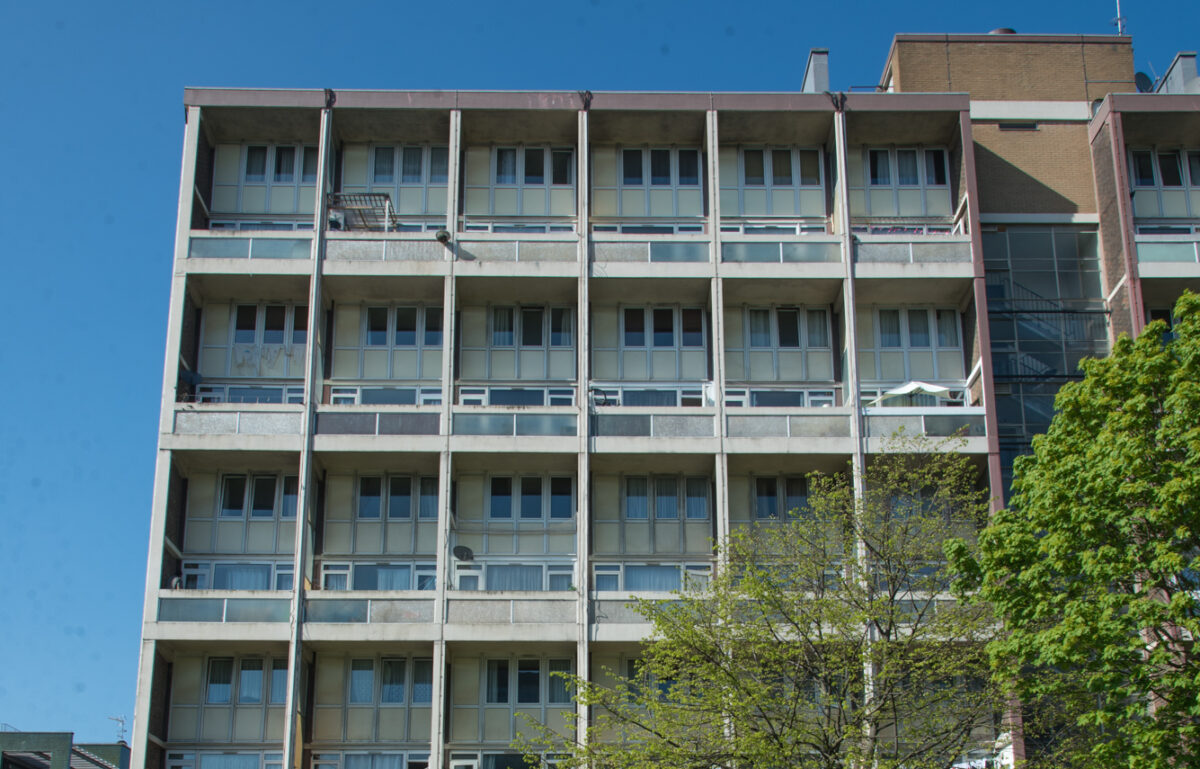COVID 19: the State’s initial interventions in the housing market
The COVID 19 pandemic has seen extraordinary interventions by a Conservative Government in the running of the UK economy. In the private housing market, the Government has moved to ensure that homeowners suffering falls in income are not threatened by repossession. At the same time, some finance institutions providing mortgage finance (along with other businesses) have been offered loans and guarantees from Government worth £330bn to protect their own income as mortgage payers have taken advantage of the payment holiday.[i]
Private tenants (as well as tenants in social housing) are also protected from repossession proceedings in the current pandemic – in the short term at least.
The Government’s objectives here are two fold. First, in the face of the health crisis and subsequent economic meltdown, Ministers had to ensure that homelessness did not increase exponentially.
But crucially the Government also needs to protect the housing market from collapse because of the sector’s importance to the UK economy. Housing assets make up 35% of all personal wealth in the UK – some £5.1 trillion. Also there is a total of £1.4 trillion outstanding on mortgage loans in the UK economy while investment in housing accounted for 4.1% of UK GDP in 2018. [ii]
So what will happen in the housing sector as the UK emerges from the economic shock precipitated by the COVID 19 health crisis? In what ways will Ministers seek to prop up this critical part of the economy longer term? We have some examples from the past that might serve as pointers to what might happen.
1974: Circular 70/74[iii]
In February 1974 the Labour Party took power at a time following a doubling of house prices and when mortgage interest rates had hit 11%. The house price boom was followed by a significant decline in the market’s fortunes with particular concern that house builders might go bankrupt as they failed to sell newly built housing. As a consequence, the Labour Government introduced provisions under Circular 70/74 (called Local Authority Housing Programmes) which helped bolster the private housing market and also increased the stock of social housing. Specifically the Circular enabled local authorities to buy new unsold housing from private developers.[iv] In 1974/75 £118 million was spent on buying 11,700 new private houses in England and Wales.[v] The Circular also enabled the Housing Corporation[vi] to fund similar purchases by housing associations.
1993: Housing Market Package (HMP)
The housing market in the early 1990s was characterised by high interest rates which resulted in falling house prices and the emergence of negative equity for some mortgage borrowers. Overall there was a lack of demand for new construction and builders were left with housing stock that they could not sell on the open market. In late 1992 the Conservative Government responded to this market failure by allocating £577 million to the Housing Corporation to fund housing associations to purchase new, empty and repossessed properties by 31st March 1993.
In total, in just 93 working days, 81 housing associations acquired 18,430 vacant properties, 2,400 over target. Fifty per cent of the stock was bought from builders/developers. The public funding was supplemented by private finance to the tune of £328 million. [vii]
2008/09: Mortgage Rescue Scheme (MRS)
Over 10 years before the current health emergency and related economic crisis, the global economy was shaken by a meltdown in the finance markets in 2008. The UK’s Labour Government responded to the ensuing recession by introducing a wide range of fiscal and monetary measures in an attempt to revive economic activity and stimulate growth. On 2 September 2008 the Government announced a £2 billion package for housing which included the following:[viii]
- bringing forward spending on housing commitments from future years to encourage the building of more social housing
- raising the £125,000 threshold for Stamp Duty on house purchases to £175,000 for 12 months
- providing “free” five year loans of up to 30% of a property’s value for first time buyers of new homes in England
- shortening from 39 weeks to 13 weeks the period before Income Support for Mortgage Interest was paid
As part of the package the Government also made available £200 million for mortgage rescue schemes, with the objective of assisting up to 6,000 households under the threat of repossession.
Under the MRS, eligible homeowners threatened with repossession could apply to housing associations to provide them with an equity loan to help them reduce their monthly mortgage payments and retain ownership; or, alternatively, to purchase the home outright with the former owner remaining in the house as a tenant.
What next for the housing sector?
The health emergency has become an economic crisis and housing is likely to suffer as much as any other sector in the UK economy. The mortgage holiday and the ban on repossessions in the owner occupied and rental sectors both finish in the autumn. And this will coincide with the ending of the furlough scheme for employees who are without work in the current pandemic. The scenario is set for a significant readjustment in the housing market as incomes are squeezed, unemployment rises and consumer confidence falls away. Given this context how will the Government support and indeed boost the housing sector in the face of deepest recession in 300 years?
There are a number of options available to Ministers.
Before the current crisis, Rishi Sunak’s March 2020 budget set out a £12.2bn Affordable Homes Programme over the five years from 2021/22; an additional £1bn for a Building Safety Fund to remove dangerous cladding; and £650m to help rough sleepers into permanent accommodation. The Budget also reversed the interest rate hike imposed on borrowing from the Public Works Loan Board for new council homes.[ix] Of course much of the Government’s housing budget is focussed on its pet home ownership ‘products’ such as First Homes and Help to Buy.
The Government has recently announced measures intended to boost the housing sector in the wake of the pandemic. As part of this initiative Permitted Development Rights (PDR) are being extended to allow for the demolition of residential/commercial properties where they are replaced by new housing. From September such schemes will not require full planning consent. Significant concerns about these changes in planning regulations have already been voiced as they will erode standards and could see occupiers living in unsafe conditions. [x]
In the Chancellor’s Summer Statement £2bn was set aside for Green Home grants to home owners and landlords to make around 650,000 homes more energy efficient. A £50m fund was also established to pilot a scheme to decarbonise social housing. The most expensive initiative sees the Stamp Duty zero-rated threshold raised from £125,000 to £500,000 until 31st March 2021. Estimates suggest this will cost the Treasury £3.8bn. [xi]
But the schemes announced to date are likely to be just the start of significant Government interventions in the housing sector as the recession deepens later this year. We should expect the Autumn Budget to include significant measures to boost the housing sector as part of a Keynesian-style counter cyclical strategy to kick start the ailing economy.
Using borrowed funds (in the main) by Government, local authorities and housing associations, look out for at least some of the following:
- schemes to buy new but unsold housing from distressed private developers
- mortgage rescue schemes for households unable to maintain loan repayments because of unemployment or reduced income
- more direct investment in new social housing to not only boost the provision of low cost accommodation to rent but also to create jobs in the construction sector (which is likely to be badly hit as private investment in housing slumps)
- schemes to convert offices, shops, pubs and restaurants into social housing as the recession takes it toll on different parts of the commercial property market amid changes in working patterns and leisure activities
A progressive, left leaning Government would use the crisis to boost the stock of social housing (through the purchase of homes from households – including Buy to Let landlords – in distressed financial circumstances). The purchase of unsold new housing from developers would also be subject to conditions such as restrictions on executive pay and bonuses and shareholder dividends. Equity stakes in house builders seeking public funding would be required and workers’ pay and conditions would be enhanced too. Any tax avoidance by State-funded developers would be prohibited. New housing funded through the public purse following the pandemic should, of course, be to the highest standard particularly in terms of energy efficiency and sustainability.
Unfortunately we are unlikely to see the current Government impose such conditions on private sector beneficiaries from increased State spending in the housing sector. But we live in hope.
Note: an earlier version of this blog was published as a Briefing for Housing Quality Network (HQN)
[i] https://www.gov.uk/government/news/chancellor-announces-additional-support-to-protect-businesses
[ii] https://www.ons.gov.uk/peoplepopulationandcommunity/personalandhouseholdfinances/incomeandwealth/bulletins/totalwealthingreatbritain/april2016tomarch2018
[iii] Department of the Environment: Circular 70/74, HMSO, 1974
[iv] https://api.parliament.uk/historic-hansard/commons/1975/feb/06/housing
[v] Financial Times, 22 April 1975
[vi] Homes England now takes on the role of funding housing associations/registered providers
[vii] Alan Murie, Moving Homes: The Housing Corporation 1964 – 2008, Politico’s, 2008
[viii] http://news.bbc.co.uk/1/hi/uk_politics/7592852.stm
[ix] https://www.insidehousing.co.uk/insight/insight/budget-2020-the-key-housing-measures-at-a-glance-65389
[x] https://www.insidehousing.co.uk/insight/permitted-development-wrongs-the-problems-with-the-pms-planning-deregulation-drive-67066
[xi] https://www.insidehousing.co.uk/news/news/sunak-confirms-2bn-green-homes-grant-67102

